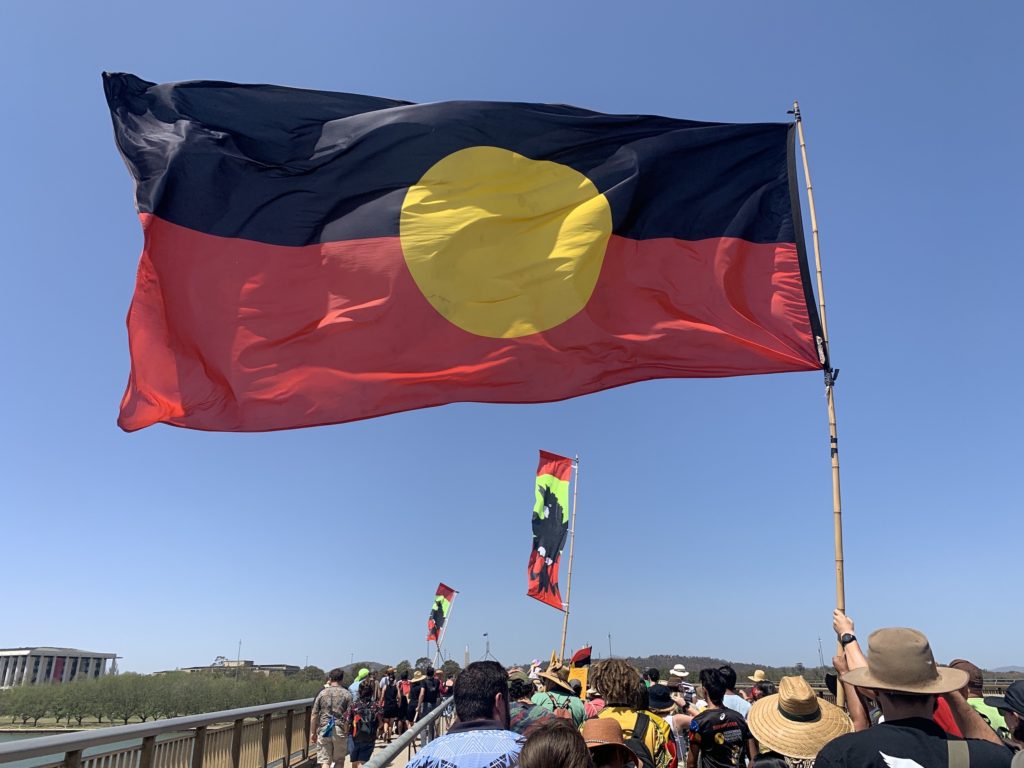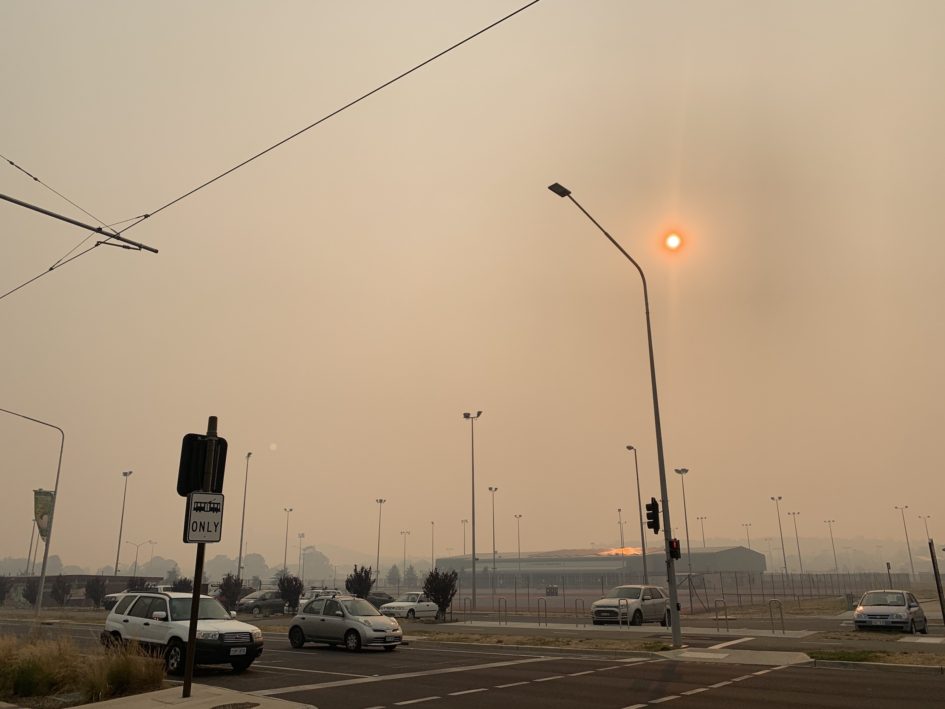Monday, 27 January
This morning I sealed our front door again. At first we used basic masking tape, but with the new year came a realisation the smoke would be with us for weeks. Looking back at the photos on my phone, the first image I took of the sun reduced to an orange smudge was from 8 December. I worried about the walls in our rental house, had visions of us tearing strips off the pristine new paint job the owners of the property had been so precious about during our first inspection.
Now we use green Washi—low tack tape made from Japanese paper—around our doors, and to hold doubled cling wrap over vents and fans. Bright green lines highlighting the cracks and gaps where the toxic air gets in.
Japanese Washi. PM2.5. P2 masks. A shared vocabulary for Canberrans navigating the anxieties of the 2019–2020 summer.
Saturday, 25 January
We drove to Huskisson today for the Umbarra ‘Black Duck’ Corroboree Fundraiser for Bush-fire Victims in NSW. It was our first visit to the coast since moving to Canberra in September.
Taking the back roads we passed through kilometres of burnt country. First came trees with trunks scarred black, then sections where black branches and dead rust-red leaves rendered the evergreen forest weirdly autumnal. Where the fire was most intense the leaves were gone. So were the twigs. All that remained were trunks and thick branches, uniform and black like collections of giant artists’ charcoals. Here and there the blackness was interrupted by ragged splits of wood where trees had fractured and fallen, or the flat, fresh planes of timber where chainsaws had started their work.
Every few metres a dent in the grey roadside barrier showed where a tree had fallen across the road. Yellow signs were twisted and coated with soot. One read: “Wombats 3km.” For the next three kilometres the forest was utterly destroyed.
Yet here in Huskisson the long weekend continues. We eat bakery pies and vanilla slice, watch the end of the corroborree, and set up in the shade at the back of a curved section of beach. It’s hot in the sun, so I head straight for the water and throw myself under a wave.
Surfacing, my partner joins me. We see a line of leaves floating toward us. Most of them are black. Looking closer, we see fragments of ash and charcoal all around, just beneath the surface of the water. We are swimming in the charred remains of the forest. It gets in our hair and our bathers; it sticks to our skin.
Nearby, a small boy in a wet suit launches himself into the low waves. He seems happy, but with no other responsible adults nearby we watch nervously. Another wave rolls through. The boy is dunked, resurfacing to smile at us, oblivious to our rising anxiety. He still seems happy. But it looks more like one of those wide-eyed, hyperactive smiles small children get—one extra rush away from overflowing into terror.
When I was a child, walking along the beach near my parents, I was swept in by a wave. My parents thought they had lost me. I’m not sure if I remember the event, or just its repeated retelling, but my memory is of concern for my teddy bear, dripping wet in my hand as I was pulled from the sea. Perhaps this was one of the times he was hung out to dry, held on the washing line by a cruel peg over a single ear. I still have him. He sits on top of the bookcase in our bedroom, one ear missing.
Walking back up the beach, past a group of Muslim women in burkinis supervising their children in the shallows, we notice the sweeping crescents of ash lining the sand, carried there by higher tides. A man walking a shaggy white dog stops for a chat. He tells us about the bioluminescence he saw the night before. Not unusual in these parts, but much stronger now, caused by the fires he reckons.
It sounds like a scene from a film—flames in the hills echoed by moonfire in the waves. Orange and teal.
Sunday, 26 January

Invasion Day. The air quality is hazardous again. I head down to Civic for the march. As I leave the house a group of utes roar down Northbourne Avenue, decked out in Australian flags.
It’s my first Invasion Day in Canberra. Though the crowd is much smaller than Melbourne’s, where I marched in previous years, I feel there is something significant about being here in the capital. At the end of the long walk we cross the lawns in front of Old Parliament House, heading up onto the large grass area in front of our current parliament. The ground is blanketed with the remains of trees, shredded by the previous Monday’s monster hail. Baked by the sun, they crunch beneath our feet.
Friday, 31 January
The end of another week of smoke and fire. Today I’m working in the National Library of Australia, taking refuge from the 41°C heat.
Yesterday I got access to my office at Australian National University long enough to pick up some books and water my plant, but two weeks after the hail we are still not allowed back in to work. I was there when it happened, filming the giant stones hitting the dirt outside my window as behind me the skylights in the corridor shattered and ice bounced through my door.
Today, looking out the window at the NLA, the trees are still sparse and ragged. A small hatchback sits next to us in the carpark, its windscreen a network of cracks, wing mirrors shattered, waiting to be towed.
The wind today is hot and dry. This afternoon a State of Emergency has been declared in the ACT as the Orroral fire continues to grow. Tomorrow the forecast is more of the same: 41°C, extreme fire danger, no rain. More smoke. Another long weekend.



1 Pingback